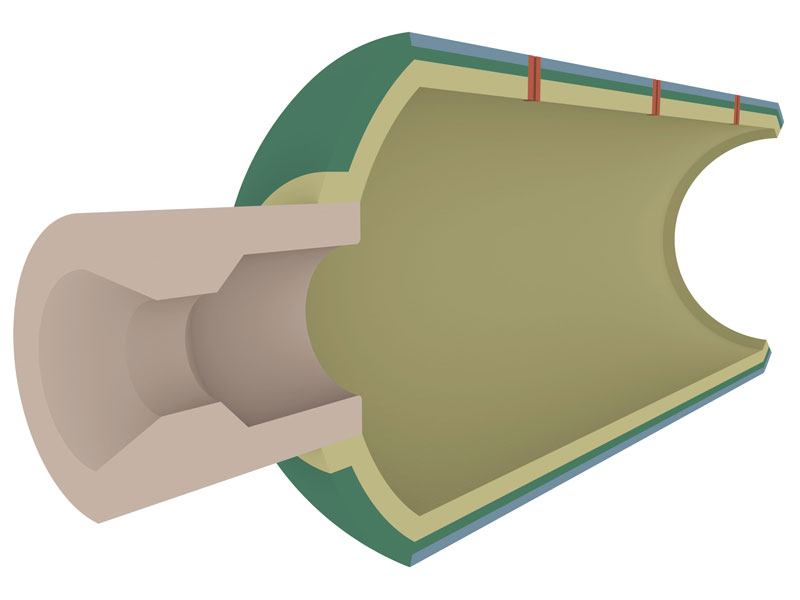Refineries
Crude & Vacuum Distillation Unit

| Floor | Burners |
| Insulating Lining | Insulating Lining |
The vacuum distillation unit separates the heavier portion of petroleum crude oil into fractions.
The refractory materials offered by MATHIOS REFRACTORIES are tested and proven by the petrochemical industry around the world. Products from the following lines are recommended by our experts:
- IDEAL: Alumina (Al2O3) bricks, with formulations based calcined fireclay and mullite, are used as floor linings
- MAT PLUS: Alumina (Al2O3) low cement castables (LCC), with formulations based on sintered mullite, are used as burner linings
- MAT MICRON: Alumina (Al2O3) ultra-low cement castables (ULCC), with formulations based on sintered mullite and bauxite, are used as burner linings
- MAT: Alumina (Al2O3) insulating castables, with formulations based on expanded clay, vermiculite and perlite, for use as insulation lining
- MAT G: Alumina (Al2O3) insulating gunning materials, with formulations based on expanded clay and perlite, for use as insulation lining
Sulfur Recovery Unit – Waste Heat Boiler

| Refractory Lining | Insulating Lining |
The waste heat boiler utilizes the large amounts of heat generated during the Claus process, to produce high and low pressure steam. The refractory lining in the WHB is mainly exposed to thermal cycling due to start-ups and shutdowns.
The refractory materials offered by MATHIOS REFRACTORIES are tested and proven by the petrochemical industry around the world. Products from the following lines are recommended by our experts:
- MAT: Alumina (Al2O3) regular castables (dense), with formulations based on chamotte, are used as refractory lining
- MAT: Alumina (Al2O3) insulating castables, with formulations based on vermiculite and perlite, for use as insulation lining
Sulfur Recovery Unit – Burner – Combustion Chamber

| Burning Zone | Burner Area | Nozzles |
| Insulating Lining High Temperature | Insulating Lining Low Temperature |
The sulfur recovery unit converts hydrogen sulfide, which is very poisonous, corrosive and flammable, to elemental sulfur via the Claus process. This process involves, and hence imposes on refractories, temperatures of at least 1250oC to destroy ammonia which can go as high as 1500oC. Other requirements include resistance to acid corrosion and thermal cycling. Throughout the years we have developed formulations to tackle specifically the aforementioned challenges, with top of the line materials to match the strict requirements of the petrochemical industry.
The refractory materials offered by MATHIOS REFRACTORIES are tested and proven by the petrochemical industry around the world. Products from the following lines are recommended by our experts:
- IDEAL: Alumina (Al2O3) bricks, with formulations based on corundum, are used as burning zone linings
- MAT PLUS: Alumina (Al2O3) low cement castables (LCC), with formulations based on sintered alumina, are used as burning zone linings
- MAT PLUS MC: Alumina (Al2O3) medium cement castables (MCC), with formulations based on corundum, are used as burner area linings
- MAT: Alumina (Al2O3) regular castables (dense), with formulations based on tabular alumina, are used as burner area linings
- MAT MICRON: Alumina (Al2O3) ultra-low cement castables (ULCC), with formulations based on corundum, are used as burner area linings
- MAT NANO: Alumina (Al2O3) no cement castables, with formulations based on sintered alumina, are used as burning zone linings
- MAT RAM: Alumina (Al2O3) plastic ramming materials, with formulations based on corundum, are used as burning zone linings
- MATH: Insulation bricks, with formulations based on alumina, for use as insulation lining